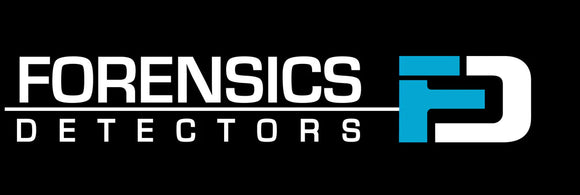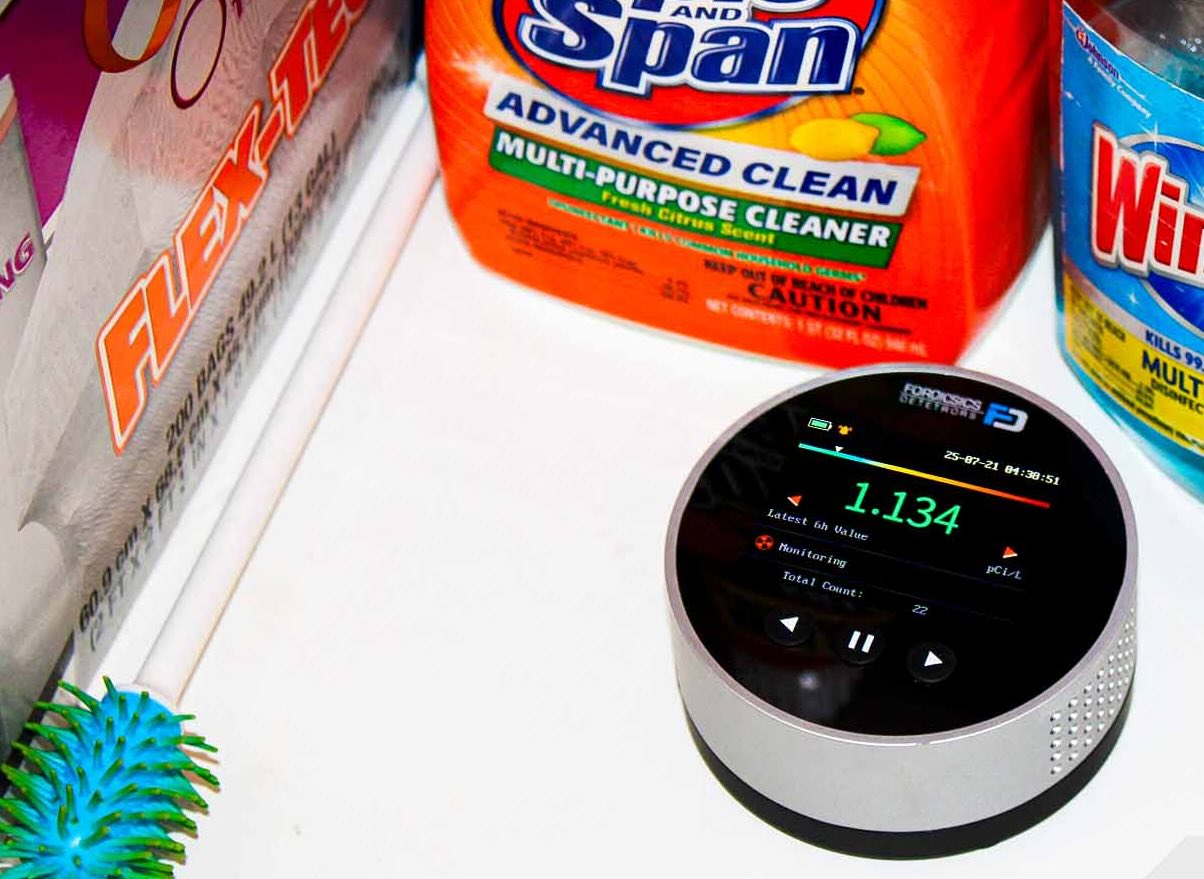A Radon detector is used to detect radon gas, which is an invisible, odorless gas that seeps from the ground into homes. It is the second leading cause of lung cancer in the US, claiming 21,000 lives annually. This silent threat goes undetected in millions of homes but is preventable through proper detection and mitigation systems. Radon detectors serve as primary safety instruments by monitoring concentration levels and providing early warning of potentially hazardous conditions. Radon Detectors help prevent exposure and ensure safety for families and building occupants.
Pros |
Cons |
|
✅ Identifies invisible gas that causes lung cancer. ✅ Affordable radon detectors now available. ✅ Prevention is possible through radon detection. |
⛔ Requires regular retesting. ⛔ Levels fluctuate seasonally and gas movement is unpredictable. ⛔ Mitigation systems can be expensive. |
What is the Best Radon Detector?
- Forensics Detectors Radon Detector
- Airthings 2950 Wave Radon
- HOUND-3699 Radon Detector
-
Ecosense EB100 EcoBlu
What is Radon Gas?
Radon is a naturally occurring, radioactive gas that forms when uranium, thorium, and radium break down in soil, rock, and groundwater. As a noble gas, radon is colorless, odorless, and tasteless, making it impossible to detect without specialized equipment. The gas is produced through the natural decay process of radium, which itself is a decay product of uranium found in nearly all soils. When radon forms in the ground beneath homes, it can seep through foundations via cracks, holes, or other openings, accumulating inside and potentially reaching dangerous levels.
What is a Radon Detector?
A radon detector is a specialized device designed to measure the concentration of radon gas in indoor environments. Given radon's undetectable nature to human senses, these devices serve as our only means of identifying potentially dangerous levels of this radioactive gas. Several types include short-term test kits (2-7 days), long-term test kits (90+ days), continuous radon monitors, and digital radon detectors. These devices provide measurements in picocuries per liter (pCi/L) in the United States or becquerels per cubic meter (Bq/m³) internationally.

Who Needs a Radon Detector?
Homewoners and landlords mostly need radon detectors to ensure safety of their residential occupants. However, certain situations make radon detection particularly important:
- All homeowners: The EPA recommends that all homes be tested for radon, regardless of geographic location.
- Home buyers: Before purchasing a home, potential buyers should request radon test results or have testing performed.
- Residents of high-risk areas: People living in regions designated as Zone 1 (highest potential) or Zone 2 (moderate potential) by the EPA's radon zone map.
- Occupants of basement-level living spaces: Since radon enters buildings from the ground up.
- Schools and daycare facilities: Children's developing bodies may be more vulnerable to radiation effects.
- Workplaces: Employers should ensure safe working environments by testing commercial buildings.
Why is Radon Dangerous?
Radon poses a significant health risk primarily because of its radioactive properties and the way it affects lung tissue. When radon gas is inhaled, it decays inside the lungs, releasing alpha particles that can damage DNA in lung cells. This DNA damage can lead to mutations that may eventually develop into cancer. According to the EPA, living in a home with radon levels of 4 pCi/L is equivalent to smoking half a pack of cigarettes daily in terms of cancer risk.
How Often Should I Test My Home for Radon?
The EPA recommends testing every two years, even with previously low results. If you have a radon reduction system, test annually. Always retest after major renovations that might affect airflow or create new entry points for radon. Regular testing ensures continuous protection, especially since radon levels can fluctuate over time due to seasonal changes and home modifications.
Do All Homes Need Radon Testing?
Yes, all homes need testing regardless of age. Newer homes may have radon-resistant features, but these only reduce—not eliminate—radon entry. Ironically, modern energy-efficient homes with tighter sealing can sometimes trap more radon indoors. No home is immune to radon risk, as local soil composition determines potential exposure levels.
Does Radon Testing Need to Be Done By a Professional?
Not necessarily. Homeowners can use radon detectors. These provide reliable results for general screening. Professional testing offers higher accuracy and may be required for real estate transactions or legal documentation. If DIY results show elevated levels, confirmation by a certified professional is recommended before investing in mitigation systems.
What Time of Year is Best for Radon Testing?
Winter typically shows higher readings because closed windows and heating systems create pressure differences that draw more radon from soil. For the most accurate assessment, year-round testing is ideal. If testing only once, winter provides "worst-case scenario" results. The heating season generally reveals maximum potential exposure levels when homes are most sealed against outdoor air.
Can Radon Levels Change Over Time?
Yes, radon levels fluctuate significantly based on seasons, weather patterns, soil moisture, home renovations, and changes in heating/cooling systems. Levels may vary hourly, daily, and seasonally. This variability is why long-term testing (90+ days) provides more representative results than short-term snapshots. Continuous monitoring devices can track these fluctuations to better understand your home's unique radon profile.
How Much Does Radon Mitigation Typically Cost?
Radon mitigation systems generally cost $800-$2,500, averaging around $1,200. Prices vary based on home design, foundation type, and problem severity. Sub-slab depressurization systems (most common) typically fall in the middle of this range. While representing a significant investment, mitigation is considerably less expensive than medical treatments for radon-induced lung cancer and often increases property value.
Can Opening Windows Reduce Radon Levels?
Yes, but only temporarily. Increased ventilation dilutes indoor radon concentrations while windows remain open. However, this isn't a practical long-term solution, especially in extreme weather conditions. Levels return to previous concentrations when windows close. Opening windows may reduce readings by 25-75% but doesn't address the source of radon entry, making it ineffective as a primary mitigation strategy.
Do Air Purifiers Remove Radon?
No, they do not.
Standard air purifiers, including HEPA filters, do not effectively remove radon gas. Some specialized purifiers with activated carbon may capture a portion of radon, but even these aren't efficient enough to serve as primary mitigation. Proper sub-slab depressurization systems remain the only EPA-approved effective solution, as they prevent radon from entering rather than trying to remove it after entry.
Are Digital Radon Detectors Accurate?
Quality digital radon detectors provide reasonably accurate measurements, especially models that monitor continuously over long periods. Accuracy varies by brand and model, with professional-grade monitors offering ±5-10% accuracy and consumer models typically ±15-25%. For critical decisions like home purchases or confirming elevated levels, verify results with laboratory-analyzed test kits or professional testing using calibrated equipment.
Does Radon Affect Water Supplies?
Yes, radon dissolves in groundwater and enters homes through well water. When used for showering, washing dishes, or laundry, radon releases into the air. Municipal water systems typically treat for radon, but private wells should be tested. Water-based radon generally contributes only 1-2% to indoor air radon compared to soil gas infiltration, but can be significant in homes with very high water radon levels.
Some Facts About Radon Gas Detectors:
✅ Radon gas detectors are specialized instruments designed to measure and monitor concentrations of radioactive radon gas in indoor environments.
✅ Radon is a naturally occurring radioactive gas formed from the decay of uranium in soil and rock.
✅ These detectors typically utilize alpha particle detection technology for accurate measurement at pCi/L levels.
✅ Professional-grade radon detectors offer features like real-time monitoring, digital displays, and data logging capabilities for comprehensive health protection.
✅ Detection equipment ranges from simple charcoal test kits to sophisticated electronic continuous monitors suitable for different residential and commercial applications.
What is the EPA Action Level for Radon?
The EPA has established 4.0 picocuries per liter (pCi/L) as the action level for radon. At or above this concentration, the EPA recommends taking steps to reduce radon levels through mitigation. However, there is no known "safe" level of radon exposure, and the EPA suggests considering remediation for levels between 2.0-4.0 pCi/L as well. The World Health Organization recommends an even lower action level of 2.7 pCi/L.
Final Word
The selection of a reliable radon detector remains crucial for maintaining home safety and health protection. Professional-grade detection equipment, featuring accurate sensors and comprehensive monitoring systems, provides the necessary safeguards against radon exposure risks. Regular testing, proper detector placement, and trained professional consultation ensure these detectors deliver optimal performance, making them an indispensable tool in protecting your family from this invisible threat.
About The Author
Dr. Kos Galatsis ("Dr.Koz") is the President of FORENSICS DETECTORS where the company operates from the scenic Palos Verdes Peninsula in Los Angeles, California. He is a subject matter expert on gas sensor technology, gas detectors, gas meters, and gas analyzers. He has been designing, building, manufacturing, and testing toxic gas detection systems for over 20 years.

Every day is a blessing for Dr. Koz. He loves to help customers solve their unique problems. Dr. Koz also loves spending time with his wife and his three children going to the beach, grilling burgers, and enjoying the outdoors.
Read more about Forensics Detectors here.
Email: drkoz@forensicsdetectors.com

